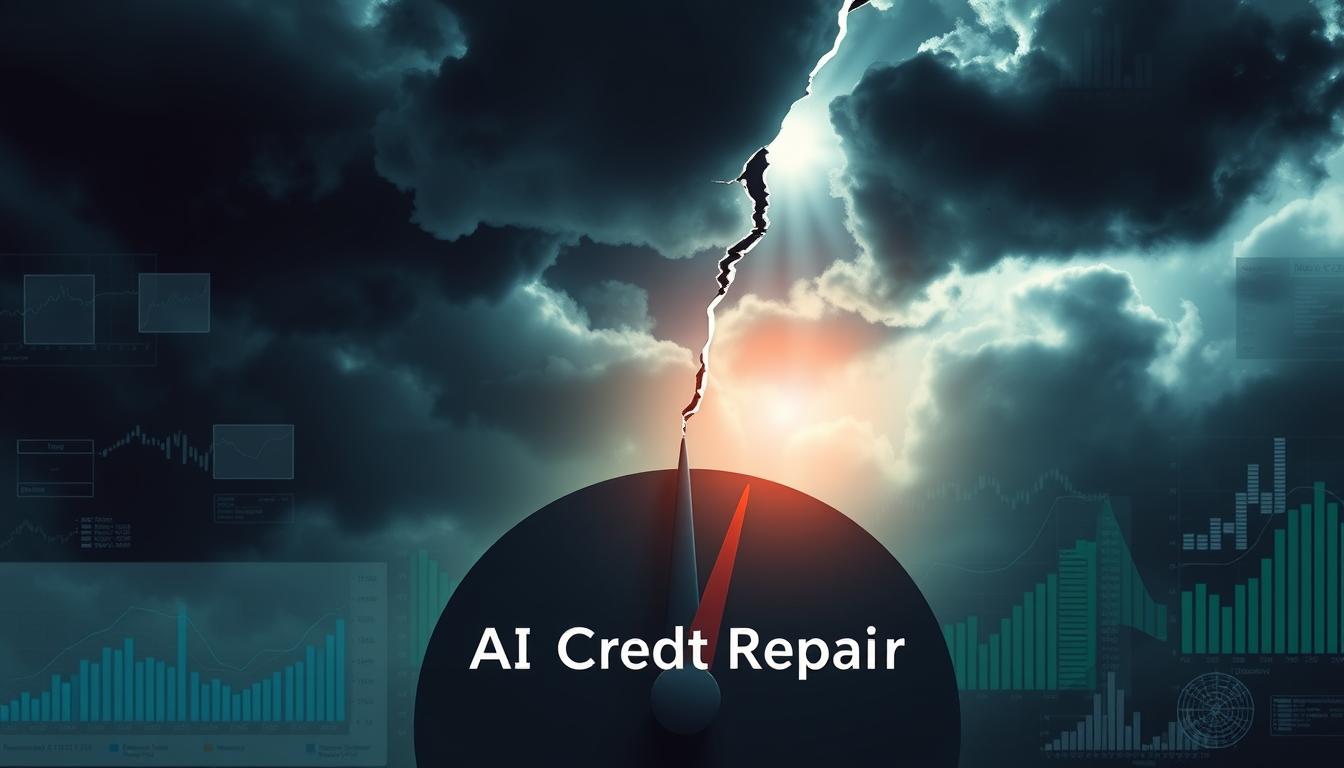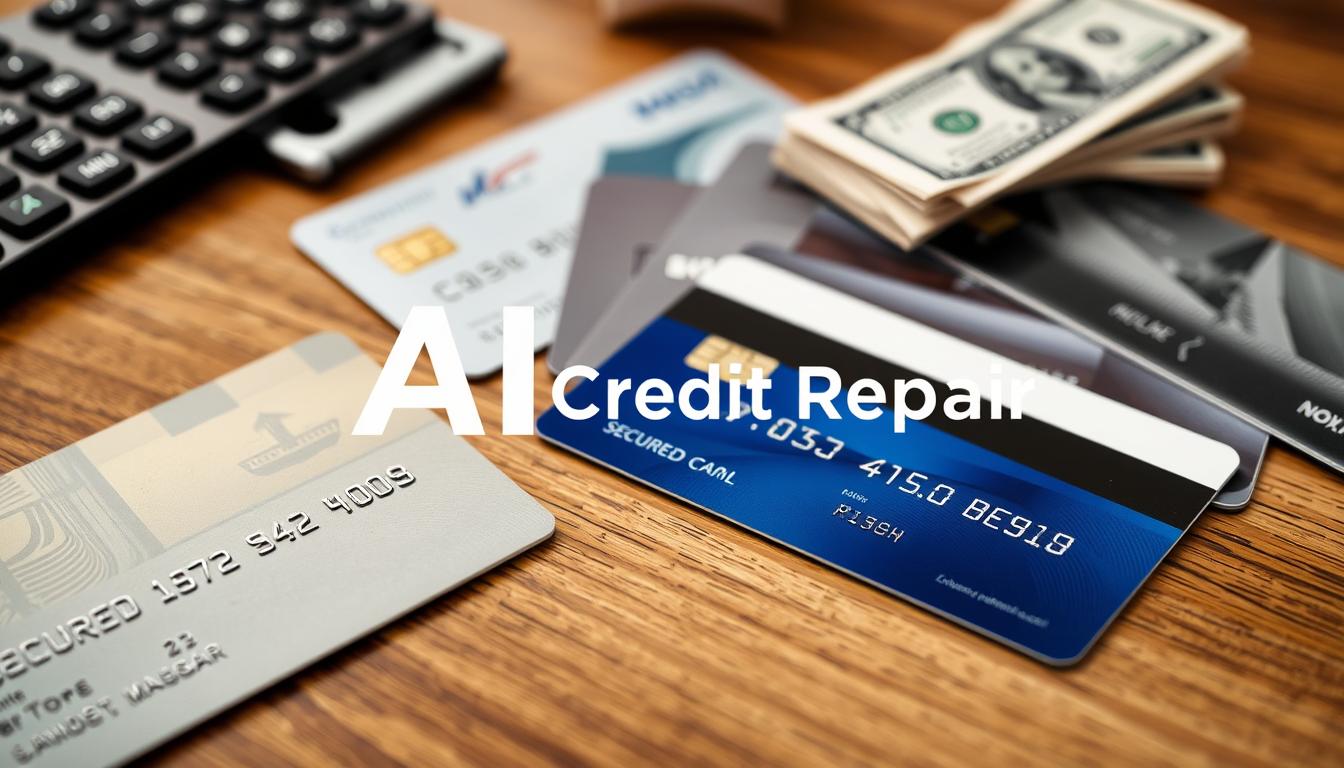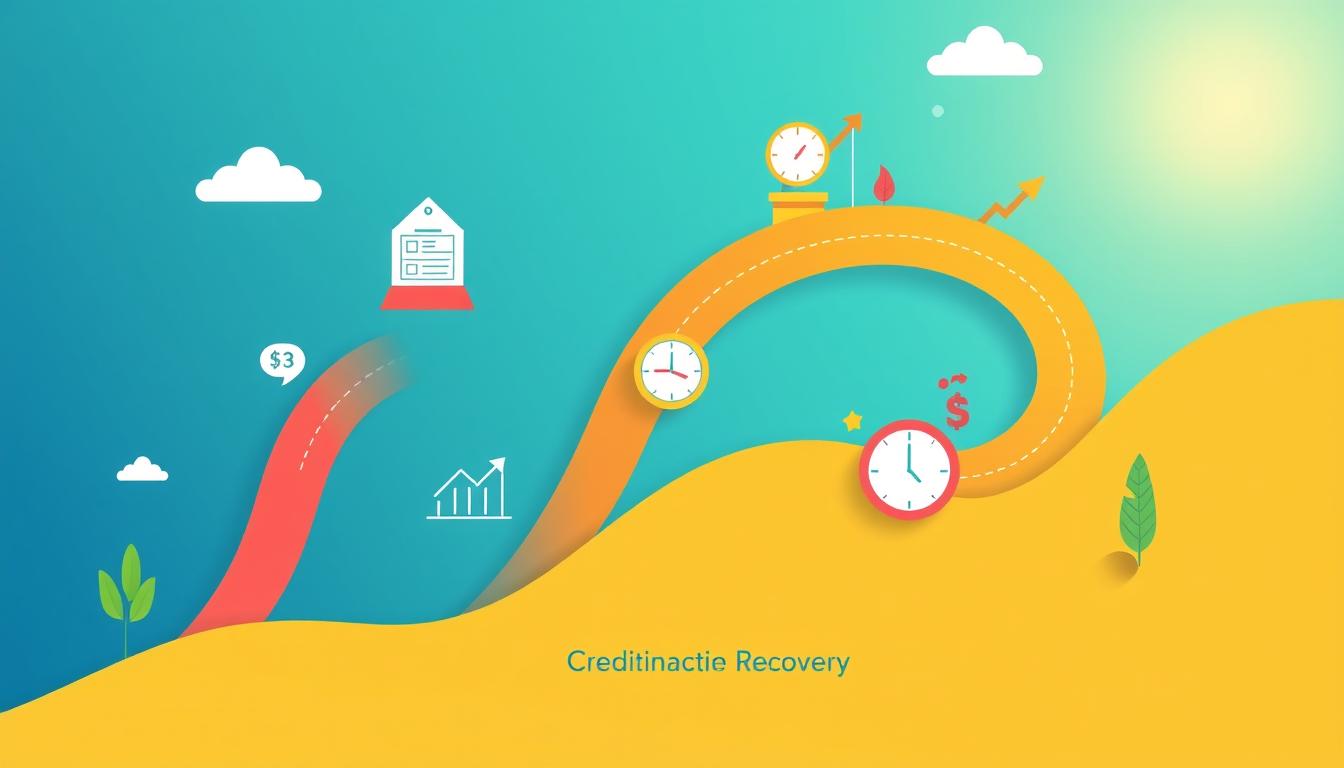Bankruptcy can severely impact your credit score. It’s vital to understand how to manage and rebuild your creditworthiness after filing. We’ll explore typical credit scores after bankruptcy and strategies for financial recovery.
We’ll look at ways to repair your credit. You’ll also learn steps to regain financial stability. These insights will help you navigate the challenging post-bankruptcy landscape.
Key Takeaways
- Bankruptcy can have a severe impact on your credit score, often causing a significant drop.
- The typical credit score range after bankruptcy is typically in the low 500s to 600s.
- Rebuilding credit after bankruptcy requires patience, diligence, and a focused approach.
- Strategies like utilizing secured credit cards, monitoring your credit report, and seeking credit counseling can aid in the recovery process.
- Avoiding common pitfalls and staying committed to your financial goals can help you bounce back from bankruptcy successfully.
Understanding Credit Scores
Your credit score shows how trustworthy you are with money. It ranges from 300 to 850. Lenders use this number to decide if they’ll give you loans or credit cards.
After bankruptcy, it’s vital to know how credit scores work. This knowledge helps you navigate your financial future better.
Factors Affecting Credit Scores
Several things shape your credit score. These include payment history, credit use, and credit mix. The length of your credit history and new credit requests also matter.
To boost your score, pay bills on time. Keep credit card balances low. Also, try to have different types of credit.
Importance of Credit Scores
Your credit score greatly impacts your financial life. A higher score can get you better interest rates and loan terms. It also increases your chances of credit approval.
A lower score makes it hard to get financing. It can even affect renting an apartment or getting a job. A strong credit profile is key to reaching your money goals.
| Credit Score Range | Credit Rating | Impact on Financing |
|---|---|---|
| 800-850 | Excellent | Typically qualify for the best interest rates and terms |
| 740-799 | Very Good | Likely to receive favorable interest rates and terms |
| 670-739 | Good | May qualify for most credit products, but with slightly higher rates |
| 580-669 | Fair | May have difficulty getting approved for credit or face higher interest rates |
| 500-579 | Poor | Likely to have limited credit options and face the highest interest rates |
Knowing what affects your credit score helps you recover from bankruptcy. You can take steps to rebuild your credit over time. This knowledge empowers you to create a stronger financial future.
Bankruptcy and Its Impact on Credit Scores
Filing for bankruptcy can severely damage your credit profile. It leads to a significant drop in your credit scores. Understanding these effects is vital for planning your financial recovery.
A bankruptcy filing stays on your credit report for up to 10 years. This negative mark makes it harder to get credit, loans, housing, or jobs.
| Credit Score Impact | Average Decrease |
|---|---|
| Chapter 7 Bankruptcy | 150-200 points |
| Chapter 13 Bankruptcy | 100-150 points |
Chapter 7 bankruptcy usually causes a bigger drop than Chapter 13. The exact impact depends on your credit history and other factors.
Rebuilding credit after bankruptcy is challenging but possible. It requires consistent, responsible financial management. You’ll need a strategic approach to regain credibility with lenders.
The impact of bankruptcy on credit can last for years. However, you can take steps towards improving your credit score after filing for bankruptcy.

“Bankruptcy is a last resort, but it can provide a fresh start. The key is to understand the how bankruptcy affects credit scores. Develop a plan to rebuild your financial future.”
What Is Credit Score After Bankruptcy?
Typical Credit Score Range After Bankruptcy
Bankruptcy can be tough, but knowing your credit score range is key. Your score after bankruptcy depends on several factors. These include the type of bankruptcy and how long ago it was discharged.
The average credit score after bankruptcy usually falls between 500 and 650. But this can vary widely. Each case is unique and scores can be higher or lower.
Chapter 7 bankruptcy often hits credit scores harder. Scores typically range from 500 to 600. Chapter 13 bankruptcy tends to have a milder impact. Scores usually fall between 550 and 650.
Rebuilding credit takes time and effort. Focus on maintaining a positive credit history. Make all payments on time. Work actively to improve your creditworthiness.
With patience and smart planning, you can recover your credit score. Financial stability is possible after bankruptcy. Stay committed to your goals and watch your score improve.
Rebuilding Credit After Bankruptcy
Bouncing back from bankruptcy’s impact on your credit score is challenging, but not impossible. Several effective strategies can help you improve your credit score. These steps can gradually rebuild your financial stability.
Strategies for Credit Repair
A key step is getting and responsibly using a secured credit card. These cards need a refundable security deposit, which becomes your credit limit.
By making timely payments, you show your creditworthiness. This helps rebuild your credit history over time.
- Obtain a secured credit card and make on-time payments
- Dispute any errors or inaccuracies on your credit report
- Gradually increase your credit limits as your credit score improves
- Avoid taking on new debt and focus on paying down existing balances
- Consider using a credit-building loan to establish a positive payment history
These strategies can help you rebuild your credit after bankruptcy. They also help improve your credit score over time.
Patience and responsible money management are crucial. They’re key to successfully navigating this process.
“The road to rebuilding your credit after bankruptcy may be long, but with determination and the right strategies, you can regain financial stability and a strong credit profile.”
Monitoring Your Credit Report
Regularly monitor your credit report after declaring bankruptcy. This helps spot inaccuracies and errors in your credit information. It’s a key step in rebuilding your credit and maintaining financial stability post-bankruptcy.
Checking your credit report keeps you informed about your credit standing. You can make smart decisions to improve it. By addressing issues, you take control of your financial future.
- Obtain a free copy of your credit report from each of the three major credit bureaus (Experian, Equifax, and TransUnion) annually.
- Carefully review your credit report for any inaccuracies, such as incorrect account information, late payments, or erroneous judgments.
- If you find any errors, promptly dispute them with the respective credit bureau to ensure your credit report accurately reflects your financial history.
- Monitor your credit report for any significant changes, such as new accounts or inquiries, and address them accordingly.
Regular credit report checks are vital after bankruptcy. They help you rebuild credit and stay financially healthy. Addressing issues promptly leads to a brighter financial future.
| Credit Report Element | Importance |
|---|---|
| Accounts and Payment History | Ensures accurate reflection of your credit behavior and responsible management of accounts. |
| Credit Utilization Ratio | Monitors your credit usage and helps maintain a healthy balance between available credit and debt. |
| Inquiries and Hard Checks | Identifies any unauthorized or excessive credit inquiries that could negatively impact your credit score. |
| Bankruptcy Records | Verifies the accurate reporting of your bankruptcy filing and its impact on your credit history. |
“Regular credit report monitoring is a crucial step in rebuilding your credit after bankruptcy. It empowers you to take control of your financial future and make informed decisions for your long-term financial well-being.”
Secured Credit Cards for Rebuilding Credit
Rebuilding credit after bankruptcy can be tough. Secured credit cards offer a solution. They help establish a positive payment history and boost your credit score.
These cards need a refundable security deposit. This deposit becomes your credit limit. They report your payments to major credit bureaus.
Benefits of Secured Credit Cards
Secured credit cards offer several perks for post-bankruptcy credit rebuilding:
- Establish a Credit History: By using a secured credit card responsibly, you can demonstrate your ability to make on-time payments and build a positive credit history.
- Increase Credit Limits: As you make timely payments, some secured card issuers may increase your credit limit, which can help improve your credit utilization ratio.
- Transition to Unsecured Cards: Over time, as your credit score improves, you may be able to upgrade your secured card to an unsecured card, retrieving your security deposit.
- Boost Credit Scores: Responsible use of a secured credit card can help improve your credit score and make you eligible for better credit options in the future.
Choose a card that reports to major credit bureaus. This is key for rebuilding credit after bankruptcy.
Responsible use can lead to better credit options. It’s a stepping stone to financial recovery.

“Using a secured credit card responsibly is one of the best ways to rebuild your credit after bankruptcy.”
Credit Counseling and Education
Credit counseling services are crucial after filing for bankruptcy. They guide you through credit rebuilding and help you regain financial stability. These tools provide valuable knowledge and strategies for your post-bankruptcy journey.
Credit counselors offer budgeting advice and debt management plans. They teach effective money management techniques and create personalized credit repair roadmaps. These services help navigate the complexities of rebuilding credit after bankruptcy.
Financial education resources are also invaluable post-bankruptcy. Nonprofit organizations and government agencies provide these resources. They cover a wide range of important topics.
- Understanding credit scores and how they are calculated
- Strategies for rebuilding credit, such as using secured credit cards
- Budgeting and debt management techniques
- Protecting against identity theft and fraud
- Navigating the credit report dispute process
These resources help you make informed financial decisions. They provide knowledge and tools for building a stronger credit profile. Ultimately, this leads to a brighter financial future.
Credit counseling and education can be game-changers after bankruptcy. They offer guidance and support for regaining financial footing. With these resources, you can achieve long-term financial stability.
“Credit counseling and financial education are essential components of the credit rebuilding process after bankruptcy. These resources provide the knowledge and tools necessary to make informed decisions and achieve financial stability.”
Timelines for Credit Score Recovery
Rebuilding credit after bankruptcy takes time. Your credit score improvement depends on bankruptcy type, credit-building efforts, and time passed. These factors shape your recovery journey.
Your credit score will gradually increase after bankruptcy. The exact timeline varies based on several factors:
- Type of Bankruptcy: Chapter 7 bankruptcy impacts credit scores longer than Chapter 13.
- Credit-Building Strategies: Using secured cards and making timely payments can speed up recovery.
- Time Since Bankruptcy: The negative impact lessens as more time passes.
Experts say credit scores start improving 12 to 24 months after bankruptcy discharge. Full recovery may take several years. Your score could reach pre-bankruptcy levels with time.
Knowing recovery timelines helps set realistic expectations. You can create an effective plan to rebuild credit over time. Patience and consistent financial responsibility are crucial.

“The journey to rebuilding your credit after bankruptcy may be long, but it is a worthwhile one. With determination and the right strategies, you can regain financial stability and achieve your goals.”
Common Mistakes to Avoid
Rebuilding credit after bankruptcy can be tricky. Avoiding common pitfalls is key to faster recovery. Let’s explore some mistakes that can slow down your progress.
Pitfalls That Can Delay Recovery
Neglecting to check your credit report regularly is a major error. Unresolved issues can linger after bankruptcy, hampering your recovery efforts.
Being too cautious with credit can also hinder progress. Responsible credit use is crucial for improving your scores. Balance is key.
Mishandling new credit accounts is another common mistake. Applying for too many cards or loans quickly can harm your credit utilization.
| Mistake to Avoid | Potential Impact |
|---|---|
| Neglecting to monitor credit reports | Unresolved issues can delay credit recovery |
| Avoiding credit entirely | Responsible credit usage is key to rebuilding |
| Applying for too many new accounts | Can hurt credit utilization and score |
By avoiding these mistakes to avoid after bankruptcy, you can sidestep pitfalls that can delay credit recovery. Focus on things to watch out for when rebuilding credit post-bankruptcy.
Success Stories: Bouncing Back After Bankruptcy
Bankruptcy can be discouraging, but many have rebuilt their credit successfully. These stories offer hope and inspiration to those facing similar challenges.
Sarah filed for bankruptcy due to unexpected medical bills. She felt like she hit rock bottom. But with determination, Sarah rebuilt her credit score and regained financial stability.
Tom’s story is another example of credit score recovery post-bankruptcy. He lost his job during the economic downturn. Tom didn’t let bankruptcy define him.
He focused on budgeting, paying bills on time, and using a secured credit card. Within a few years, Tom’s credit score improved significantly.
These inspiring stories show that overcoming bankruptcy is possible. With the right mindset and strategies, you can emerge stronger and more financially resilient.
“Bankruptcy was the wake-up call I needed to get my finances in order. It was tough, but it’s the best decision I ever made.” – Jessica, bankruptcy survivor
A positive and proactive attitude is key to rebuilding credit after bankruptcy. Leverage opportunities for credit rebuilding and financial education that often come with filing.
Develop healthy financial habits and monitor your credit reports closely. Use credit-building tools to rebuild your credit score and regain financial footing.

These success stories show the power of human resilience and determination. They prove that bouncing back after bankruptcy is possible with the right approach.
Conclusion
Bankruptcy can greatly affect your credit score, but it’s not the end. You can take steps to regain financial stability and build a brighter future. Understanding post-bankruptcy credit scores and rebuilding strategies is crucial.
To rebuild credit after bankruptcy, use secured credit cards wisely. Monitor your credit report regularly and seek professional credit counseling. These steps can help you navigate the credit repair process effectively.
Credit recovery after bankruptcy has its challenges. But with patience and smart choices, you can bounce back stronger. Stay focused on your long-term financial goals and make the most of new opportunities.

